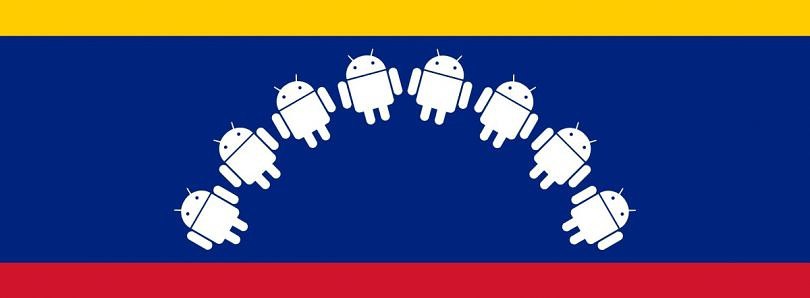Buying smartphones in Venezuela, the country with a broken economy.
by Akianonymus
Posted on August 10, 2019 at 12:00 PM

Inflation, and more particularly hyperinflation, are often some of the most crippling symptoms of a failing economy, and overall, one of the worst things that can happen to a country’s economy. Some of the most painful historical episodes of hyperinflation include Germany in 1923 (Weimar Republic), Hungary in 1946, Yugoslavia in 1994, and Zimbabwe in 2008. In layman’s terms, hyperinflation is simply a very high and constantly accelerating inflation episode which quickly and constantly increases the price of all goods in a span of weeks, days, or sometimes even hours, in turn crushing people’s wealth and causing them to minimize their holdings in local currency. A country’s economy is often considered hyperinflationary when the monthly inflation rate surpasses 50%.
As you may know by now, one modern example of an ongoing hyperinflation episode is Venezuela. This economic debacle, caused by several factors, has quickly spiraled down into a grave economic and humanitarian crisis affecting people of all social classes. This has obviously heavily impacted the average Venezuelan’s pockets and changed people’s everyday life and spending habits in every imaginable way. One aspect that has obviously been impacted by the crisis is the smartphone market. Phones have become essential tools, and in a country where you can’t really afford to upgrade your phone every two years, you’ll find yourself squeezing out the full capabilities of whatever phone you’re currently using for as long as possible. Often, this requires switching to a custom ROM like LineageOS in order to extend the lifespan of a device, which is exactly what a big number of Venezuelans are doing.
Right off the bat, there are a couple of things I should mention for context. First off, the minimum wage (and the one most people earn) is currently sitting around 40,000 sovereign bolivars (commonly abbreviated as Bs.S. or VES) monthly. At the official exchange rate, which is around 10,000 VES for every $1, this gives you around $4 a month. That’s bad enough as it is, but then we have to take into account the black market exchange rate, which is around 12,500 VES for every $1 and is the one used by most people. This one gives us around $3.20 a month. Some jobs may pay up a little bit more, but this is usually the average for most Venezuelan workers.
$65 globally, but it will set you back $85-$90 in Venezuela because of added import costs, as Xiaomi does not officially sell phones in Venezuela, plus you have to count in additional profit for the store. If you’re an average worker, you’d need to save up several monthly payouts in order to even be able to buy it, immediately exchanging it for harder currency (USD, EUR, cryptocurrency) for inflation’s sake. For how long, exactly? Well, if you earn minimum wage, you’d need to save up for at least 21-30 months. This is without accounting for other basic expenses like food and other services that rank up higher in priority. Add those in and it’s virtually impossible to save up for a phone.
How do you get money if you need a new phone then? Some jobs, particularly those in transnational companies, pay way larger amounts, normally in hard currency. These are usually online, either as freelancing gigs or full-time jobs, but there are also actual, office jobs that pay in such a way. Other people, as a result of the “Bolivarian diaspora”, have family abroad which are able to send them money on a monthly or weekly basis, which is enough to allow them to sustain themselves.
How do you actually buy a phone?
So let’s presume that you have the money and you’re ready to buy a new phone. The most logical way to go is to go into a store and buy one. The go-to place for most people’s tech-buying needs in Caracas is the City Market mall, located in the Sabana Grande Boulevard on eastern Caracas. It’s an entire mall dedicated almost entirely to technology products, including smartphones, videogames, computers, and the likes. This mall has several stores fully stocked with phones such as the Samsung Galaxy S10+, the iPhone XS Max, the Huawei P30 series, and other current devices
But going in and buying a device here isn’t a straightforward process at all. It’s actually a truly convoluted and complicated affair. Especially when you consider how little these stores actually deal with local currency at all.
Android and smartphones are also proving to be an indispensable tool for Venezuelan users, as they allow for basic communication (WhatsApp, Telegram) and banking (pago móvil services for instant money transfers between banks). During nation-wide blackouts and other emergencies, my smartphone is my only window to the outside world. So it makes sense to keep things updated and running well.
While living in a country like Venezuela, the closest you can get to newer tech, unless you actually have the money to fork out towards a flagship smartphone, is through a store shelf or through YouTube videos. But that doesn’t mean you have to miss out on the latest software developments. Developers from our forums, and the custom ROM scene in general, not only bring the newest Android builds to an older phone to serve a niche enthusiast market, but they also have the potential to keep crisis-stricken nations reliably connected despite adversities and dire poverty, and still keep them in the loop with the latest and greatest in Android.